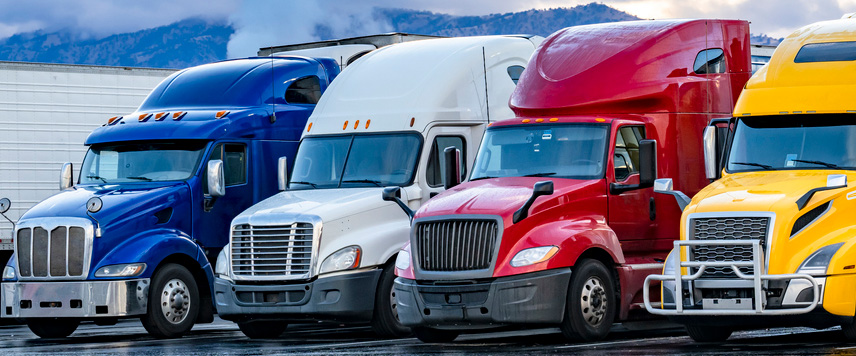As important as the trucking industry is, it is just as important to remember that there are many regulations, laws, and rules that govern the industry. These compliance requirements are put into place to keep everyone safe, from the passenger cars passed on the road to the drivers bringing goods from all corners of the country. By adhering to these regulatory measures, trucking companies can assure that the ever-present risks of driving a big rig are kept to a minimum.
Every year, new rules and laws are introduced to the trucking industry. There are so many that some experts state that “Navigating the maze of regulatory compliance in the trucking industry can be stressful, especially for new and growing companies.” So, what are some of the newest regulations being put into place? What does it mean for the compliance of your company? Read our LZBlog below to find out more about how these changes affect the industry!
“I Want to Break Free…” From Everything But Compliance Rules!
What does it mean to be a trucking company in compliance? The basics include maintaining all licenses and keep them up to date, conducting routine vehicle inspections and maintenance, and following rules about drive time, but there are SO many others. According to Invensis, a third party company devoted to studying and helping companies prepare for new regulations, “non-compliance can lead to penalties, fines, and even suspension of operations…” Therefore, let’s go through the biggest changes to compliance regulations in the trucking industry for 2024.
Starting off, coming in November of 2024, the CDL Drug and Alcohol Clearinghouse will be implementing new measures dealing with substance abuse among truck drivers. The Clearinghouse is an organization that is only four years old, but they have been working hard to make the industry a safer one. Along with collecting driver records, they also offer consultations with professionals who specialize in substance abuse and testing for carriers needing help with such a large task. In the fall of this year, the Clearinghouse announced that they will be testing for a broader spectrum of drugs, increasing the frequency of random drug testing, and implementing stricter rules for drivers who have tested positive for alcohol or drugs.
Next, there are more new pieces to the Electronic Logging Devices (ELD) Mandate. Even though the regulation itself was originally created in 2017, technology keeps moving this mandate forward. The ELD Mandate requires commercial truck drivers to log their driving hours electronically. Not only does this cut down on a paper backlog, but the automated logging of the ELD and real-time tracking increase the accuracy of HOS (Hours of Service) logs. Along with the logging and real-time tracking, the universal connectivity of ELDs can help dispatchers keep a closer eye on drivers, contributing to enhanced safety features for those in the cab and the people around it.
Many drivers will tell you that one of their biggest challenges comes with the loading and unloading of trucks. Carriers are forced to deal with wait times at ports, warehouses, and various other pick up locations, and these delays are stressful for everyone. Drivers are even acknowledging that these waits are extremely trying when it comes to making timely deliveries, which can affect their pay. In 2020, the FMCSA, after years of growing concern, began to delve into and study these delays and how they affect the industry. Two years later, the organization has started introducing what they call “Detention Pay Reforms;” these are “aimed at incentivizing timely loading and unloading, ensuring fair compensation for drivers for extended wait times.” Hoping to streamline these necessary tasks, the FMCSA and the trucking industry itself are waiting to see how these changes affect these times.
There are also many regulations coming out that are trying to create a greener trucking industry. The environment is a top priority for everyone, but it has been difficult to get trucking companies to hop on board with increasingly stringent regulations. Starting back in 2007, the EPA started the Clean Diesel Program, which has included Greenhouse Gas Emission regulations to slowly and steadily raise the standards for sustainability in the industry. The EPA is still seeking to pass other mandates aimed at improving the environmental friendliness of the trucking industry by including rules governing the emissions of trucks built after 2027. With over 13.5 million trucks on the road, the EPA hopes that they can use these regulations to stem the tide of global climate change due to pollution from the trucking industry.
Finally, starting in 2020, the FMCSA began to make strides in regulating the teaching and licensing of commercial truck drivers. The CDL was made a standard license for truck drivers in 1992, and that meant that going through the process of obtaining a CDL garnered a truck driver the required amount of education and training to drive a heavy-duty truck. However, as the trucks, roads, and passenger drivers change, the truck drivers must evolve as well. In 2020, organizations like the FMCSA began implementing ELDTs, or Mandatory Entry-Level Driver Training Programs. “This regulation aims to reduce accidents, enhance driver preparedness, and ultimately elevate the overall safety standards within the industry.” In short, drivers who are given a standard, well-organized, and detailed education will be safer on the road behind the wheel of their heavy-duty trucks.
Conclusion
Following compliance regulations is extremely important for the trucking industry and all of the workers within it. The DOT, FMCSA, and other alphabet organizations take the time to create and prioritize these rules for many reasons. While they have all been touched on above, these reasons are condensed below:
- Regulations reduce the instances of accidents caused by fatigued or undereducated drivers. They also decrease the risks from poorly maintained trucks.
- Compliance standards promote a fair playing field for all carriers who follow the mandates.
- Rules and regulations minimize the risk of legal liabilities from accidents or mandate violations.
- “Ultimately…compliance is integral to enhancing overall transportation safety, reliability, and efficiency across the logistics sector.”
No matter which part of the industry a person is involved with, the rules and regulations governing trucking companies are important to learn and to abide by for the health and safety of all!
__________________________________________________________________________
Meaghan Goldberg covers recruitment and digital marketing for Lionzone. A Patterson, GA native, after graduating from both Valdosta State University and Middle Tennessee State University, Meaghan joined Lionzone in 2018 as a digital recruitment strategist before becoming the social media manager.
Resources:
https://otrsolutions.com/whats-new-in-the-trucking-industry-2024/
https://www.invensis.net/blog/new-trucking-regulations
https://truenorthcompanies.com/blog/transportation/2024-trucking-industry-challenges-compliance.aspx




